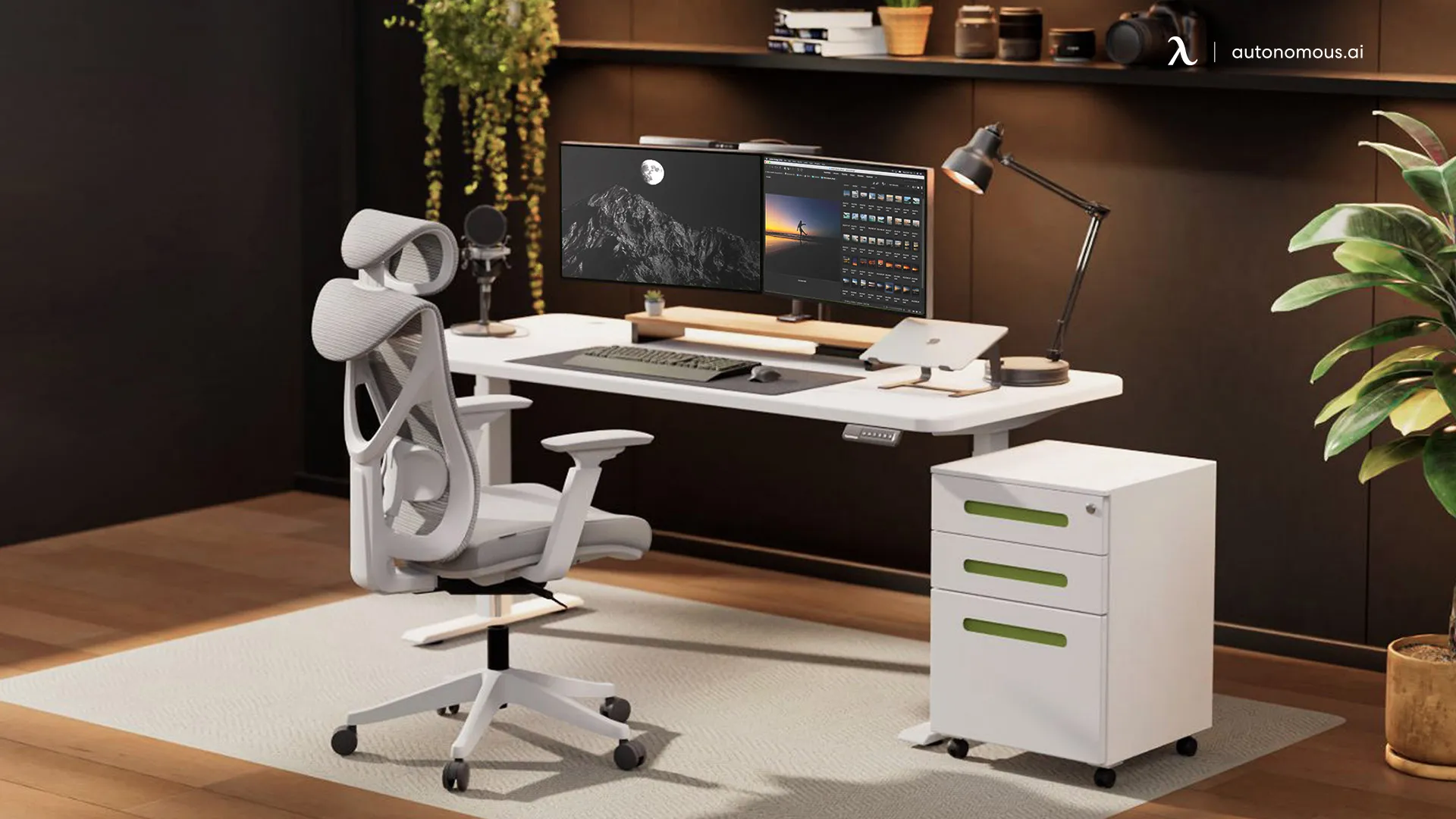
One of the first things anyone does with a new chair is to adjust the height until they are comfortable. Sometimes, though, you may encounter a chair that is simply too tall for you. If that happens, what can you do about it?
What Is Too Tall?
First of all, it’s important to recognize what is considered "too tall", and what is tall but workable.
- What is your height? If you’re shorter than the average person, chances are that a lot of common office chairs might be too tall for you. The vast majority of office chairs are designed for an average person of average height, within a given range. If you fall outside of that range, the chair won’t be appropriately sized for you.
- Some office chairs are purpose-built to be taller by design, such as drafting stools. Drafting stools are taller because they’re meant to work with desks that are taller and provide a specific kind of positioning for drafting. They don’t make great office chairs, unfortunately, unless you’re doing that specific kind of work for short periods.
- You may also want to check that your chair is adjusted as far as it can go. You know how some of the common advice when troubleshooting computers is asking whether or not the device is plugged in? It seems simple and demeaning for anyone, but it’s a common piece of troubleshooting because it does happen.
- Along those same lines, is your chair verifiably set to the lowest setting? Pull the appropriate lever to lower it on the gas spring, just to make sure. It’s entirely possible that it simply didn’t lower all the way. You can always brush up on the instruction manual just to make sure.
- You may also want to check to make sure your chair isn’t sitting on some kind of obstacle. For example, if you have a box or filing cabinet too close, lowering the chair can lower down to the height of that object and stop, because it’s in the way. Make sure your chair isn’t running into anything that could stop it from lowering.
- If it’s as low as it can go, check to see how your feet are positioned. Are you able to sit in the chair with your feet flat on the ground? If so, your chair isn’t too tall for you.
You might have other issues with your office setup, but those aren’t necessarily related to the chair, at least not directly.
Consider Switching to a Standing Desk
Another common problem is that your chair is just fine, and it’s your desk that is causing problems. If your desk is too short, you’ll feel like you’re looming over it, as if you’re trying to use a children’s desk taken from a school rather than an office desk.
Getting a taller desk might be the best option here. You can get a normal desk sized for your chair and your usage, or you can get a standing desk. If you want a standing desk, try out our calculator to see what height you’d want, so you don’t get one that’s too short or too tall for you.
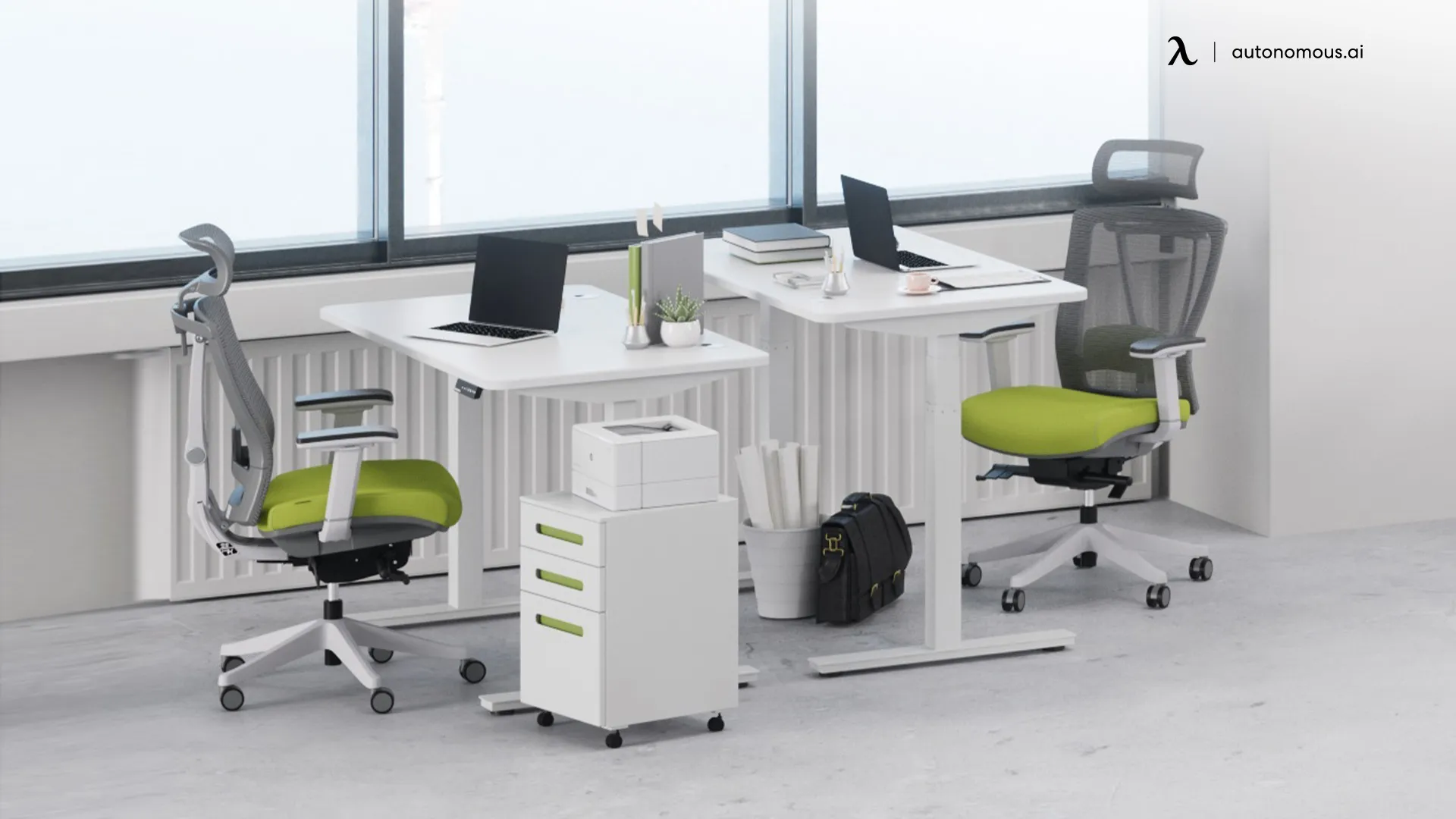
Standing desks, or more specifically, sit-stand conversion desks, are a powerful option for a flexible workplace. Most normal office desks can't adjust in height at all. A conversion desk allows you to adjust it up and down, from the extremes of sitting and standing to small inch-sized movements along the way. You can adjust your desk to the exact perfect height you want it for comfort in both sitting and standing positions.
Standing desks have a lot of benefits, as does standing in the workplace. When you set the height correctly, you will find that you’re a lot more comfortable in either position. Use your chair properly when you’re sitting, and use an anti-fatigue mat when you’re standing, and you should have no trouble maintaining a comfortable posture in either position once you’re used to it.
If your chair feels too tall for your office setup, a standing desk that can adjust upwards a bit while sitting can be an excellent option. We recommend a smart desk with memory so you can adjust it to the perfect height with the touch of a button, rather than needing to hand-crank and make adjustments every time you need to change positions.
Raise Your Monitor Height
One of the common reasons people feel like their chair is “too tall” is that they loom over their computer screens. Ergonomics dictate that your screens should be either level with your eye line or lower; you don’t want to be craning your neck upwards to look at a screen all the time.
That said, if you’ve ever tried to use a computer where the screen is too low, you know that can have issues as well. Pain in your neck and upper back is just the start of a cascade of problems you can have, caused by poor ergonomic posture stemming from the need to look down at screens.
The best solution to this is, of course, to simply raise your screen height. You can do this with a standing desk, by raising your desk height, but that raises the height of your keyboard and other interface devices as well, and that can lead to other elements of poor ergonomics.
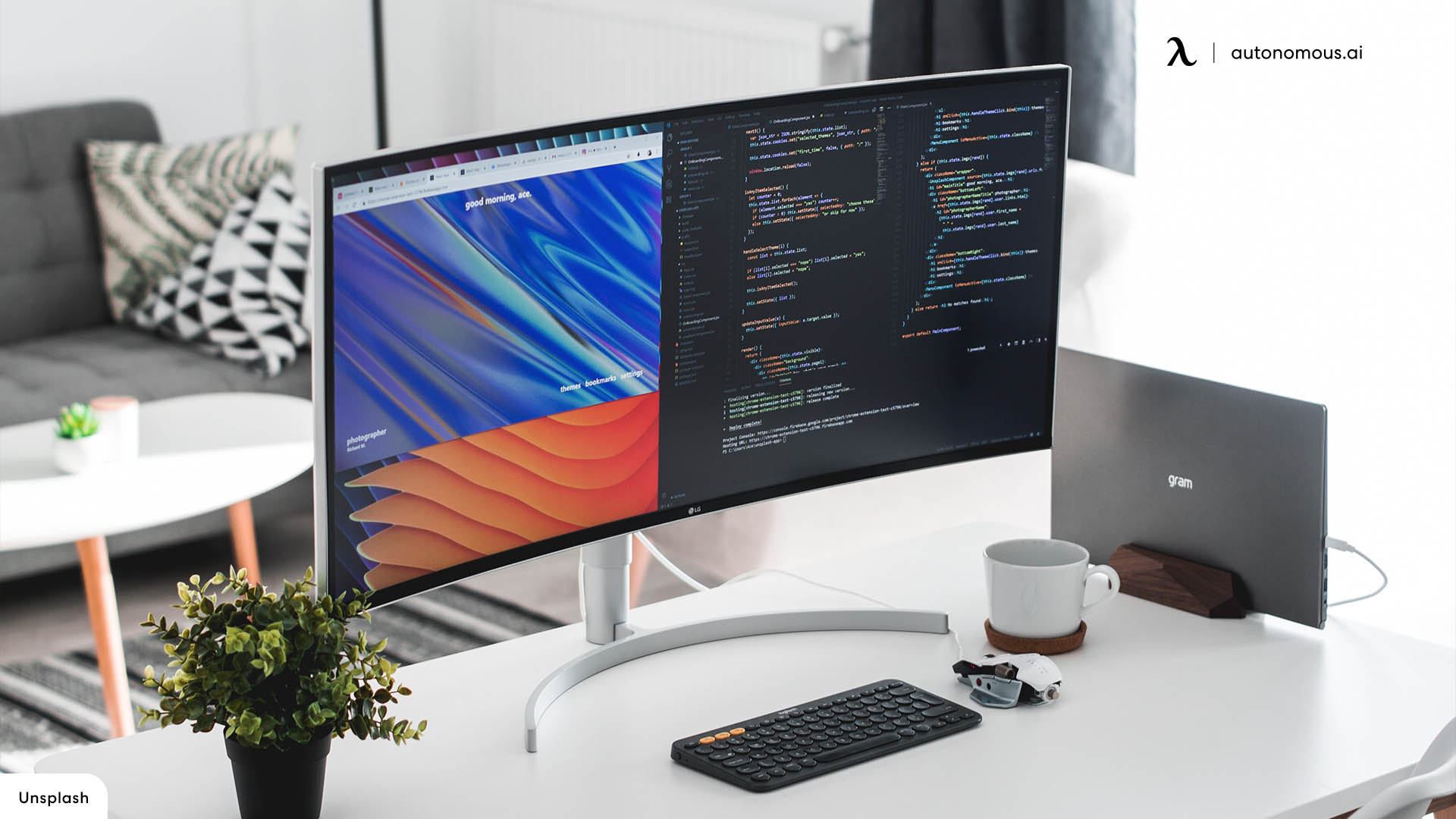
Instead, you have two options. The first option is investing in some monitor risers. Monitor risers are essentially small shelves that you can buy and put on your desk, and then put your monitor on them. These work fine in a stationary environment, but if your desk wobbles, or if you have a standing desk and adjust it up and down frequently, you’ll find that some of these risers are a little precarious.
Risers come in a wide variety of styles, at least, so if you want to get one, you can find one that matches the style of your desk so you don’t need to worry about it standing out. These are great for chairs that sit a little higher than you're used to, as you can raise your monitor to a height that you're more comfortable with.
The other option is a monitor mounting arm. These monitor arms come in two varieties: desk clamps and wall mounts. Desk clamps attach to the surface of the desk itself, which works fine for wood or metal desks but can be a problem if your desk surface is made of tempered glass. The rotational pressure can potentially shatter the desktop. Wall mounts, of course, drill into a wall and mount there. You need to have the proper hardware and tools to mount into a wall, and it means your desk has to be positioned up against a sturdy wall. That means open office concepts and cubicle walls don’t work.
Both forms of monitor mount are a little more expensive than risers, but they’re better for adjustments and for transitioning between sitting and standing. Wall mounts can cause problems with a transition but may work if they have enough flexibility.
Monitor mounting arms come in a range of different styles. Some only hold a single screen, while others can hold up to six. Some allow for a wide range of adjustment both horizontally and vertically, while others have a minimal amount of adjustment available and can get in the way of one another if you have multiple screens. In short, monitor arms are a land of contrasts, and there are many options to choose from.
Consider a Reclined Angle
Studies into ergonomics, both in terms of comfort and bodily health, have shown that two different positions work best for the human body. One is the typical triple-90 position where you sit upright, with 90-degree angles for your ankles, knees, and waist. The other is a reclined position, where you lean back 135 degrees.
This reclined position can be beneficial if your chair allows it, and if you can’t adjust to other heights. It’s an ergonomic position that doesn’t require your feet to touch the floor, and as such, is best if you have a chair that has leg rests built into its construction. This helps you rest more comfortably when you’re leaning back and gives you support for when you need to sit up more to access your desk.
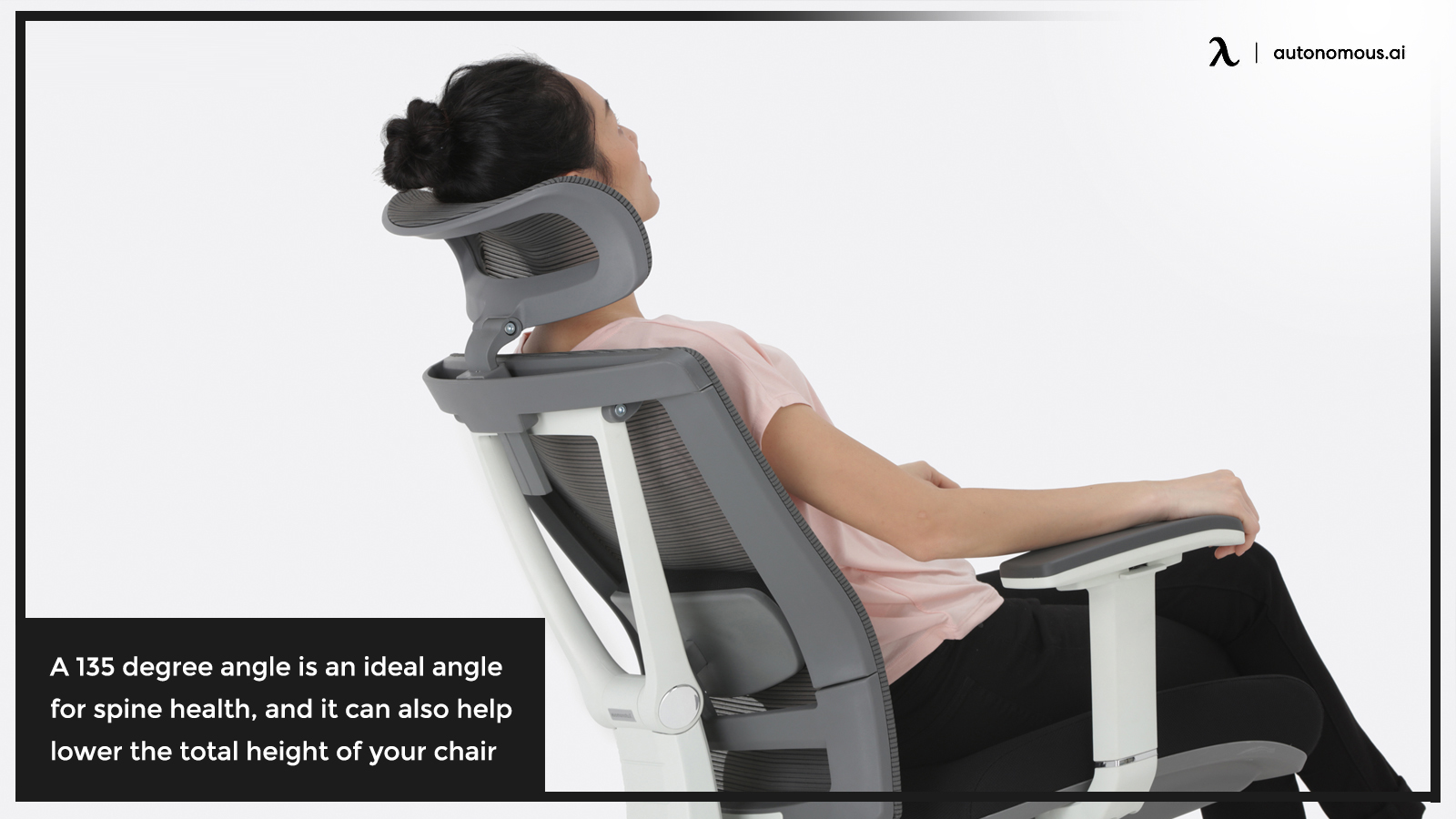
The downside to this kind of positioning is two-fold. First, leaning back takes up more space than sitting upright, and that means you need more space to work. If you’re in a limited space environment, such as an open office with people behind you and a walk space that needs to be kept clear, you might not have enough room. Likewise, you need enough room to stretch out beneath your desk, which you might not have in a smaller environment.
The other downside is that you need to be able to access your keyboard and mouse (as well as any other paperwork and tools you need to do your job, such as a phone) from your reclined position. Often, this means you need an extendable keyboard tray or a detachable tray or shelf you can sit on your armrests or across your lap. If you have a height-adjustable desk like the SmartDesk 2, this won't be much of an issue.
Give a slightly reclined position a try. When paired with a footstool, it improves your ergonomic position, lowers your overall height, and makes working at your desk much more comfortable.
Consider a Stool
Another potential way to solve the issue of a chair being too tall for your environment is to use a footstool.
A footstool is little more than a simple box that goes beneath your feet, which you can use to rest your feet flat on top instead of letting them hang.
When your feet don’t touch the ground, due to a chair that is too high, you often find that your legs hang and can swing freely. While this can feel comfortable in the short-term, there are several problems with this.
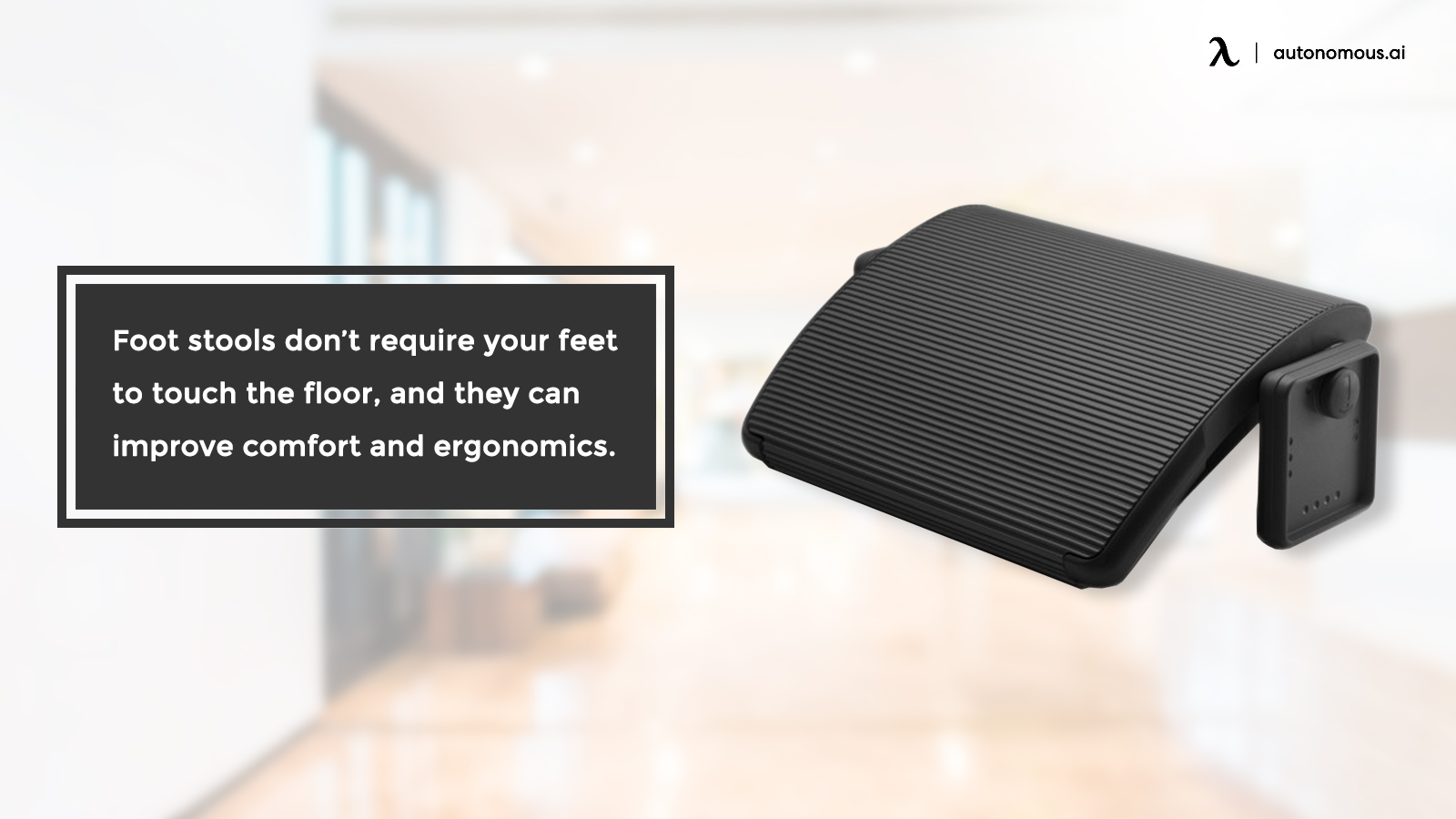
First of all, legs hanging pulls down on your thighs, which treats them as a lever and puts upward pressure on the base of your spine. This can lead to all manner of ergonomic injuries, muscle strains, imbalances, and more serious conditions over time.
Secondly, the downward pressure can cut off circulation through your legs, which reduces blood flow to your calves and feet. This can lead to your legs falling asleep, with the pins and needles feeling when you stand up. In long-term usage, it can lead to worse issues, including nerve issues and even blood clots. This is especially dangerous in people who have pre-existing conditions, including high cholesterol, blood pressure, or diabetes.
Using a stool gives your feet something to rest against, alleviating pressure against the back of your legs and balancing out your thighs. This gives you much more comfort and flexibility. The only downside, other than needing to find a stool of the right height, is that you need to keep the stool with you when you move from place to place.
Last Resort: A New Chair
When all else has been tried and fails, you might simply need a new chair. Chairs are adjustable within a certain range of motion, but that only suits people of a certain set of dimensions. If you’re too short or too tall for those dimensions, or if your chair is far larger than a standard chair, you may need to invest in a chair that is sized appropriately for you.
Look particularly for chairs that are designed for your height and weight. These are often specialty items, so you may need to look for a specialty store, or contact a manufacturer directly and ask if they have variations of their products with an array of different dimensions.
You may also want to consider several solutions at once. Investing in both a footstool and a new desk can alleviate a lot of issues caused by a chair that doesn’t quite fit, and it allows your work station to be more flexible for your needs. Accessories can help customize any workplace, and small investments in items like a footstool or a monitor riser can help make a space uniquely yours. While this isn’t always possible in some office environments, it’s a great idea for any work-from-home situation you might be in.
Whenever you’re shopping for a new chair, desk, or other office furniture, it makes sense to take basic measurements of your height, as well as the height of your knees, elbows, and eye line so you can compare them to the measurements of the furniture you’re examining. That way, you can be sure to get the best equipment for your job.
Bleiben Sie mit uns in Verbindung!
Abonnieren Sie unsere wöchentlichen Updates, um über unsere neuesten Innovationen und Community-Neuigkeiten auf dem Laufenden zu bleiben!
Interesse an einer Linkplatzierung?
.svg)



/https://storage.googleapis.com/s3-autonomous-upgrade-3/production/ecm/230914/bulk-order-sep-2023-720x1200-CTA-min.jpg)

/https://storage.googleapis.com/s3-autonomous-upgrade-3/static/upload/images/new_post_author/admin-1.png)